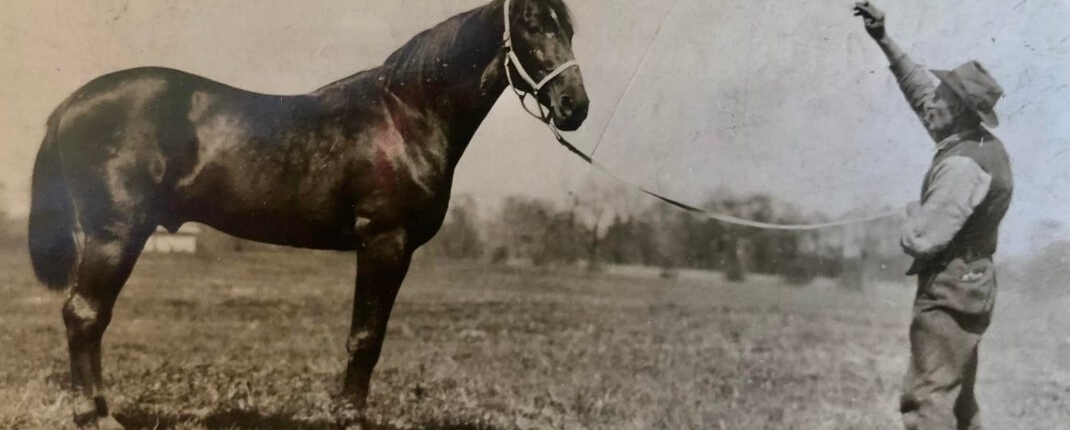The Great from Kalamazoo
by Lisa Harkema
He turned out to be one of the most important stallions in standardbred history, but it could have been very different. The colt was a challenge for his trainer and only made two starts in his first two seasons. In the end he only lasted five more races before a disappointed owner sold him to a buyer whose partner really didn’t want the horse at all. But Peter the Great persevered and became a true legend and foundation stallion of the standardbreds.
The story of Peter the Great revolves around Kalamazoo, Michigan. At Samuel A. Browne’s famous stud farm the mare Santos saw the light in 1887. By then, her sire Grand Sentinel was already dead. He had been turned out in the paddock in January the same year, and hit an icy spot when playing around in his paddock. The stallion was so badly injured he needed to be put down. At yearling auction, Santos was sold $850. The new owner, JI Case of Janesville, Wisconsin, clearly didn’t see that much in the mare and put her up for sale in February the following year. The two-year-old filly was then purchased by breeder HD McKinney, a cousin of Case, for $470. When Santos failed to get in foal she was traded back to her breeder Samuel A. Browne. She was placed in the hands of trainer Peter V Johnson, who used her as a driving horse in the winter and spring of 1890-1891. In foal to Ambassador, Santos was sold $750 at auction in December 1891 to fellow Kalamazoan Daniel D Streeter, and she gave birth to a filly, named Episode, the following year.
The next foal was from Michigan’s speed sire par excellence, Pilot Medium. When it was time to break in the colt, Streeter sent him to trainer Peter V Johnston. The latter had retired from training and racing horses and moved to Michigan, but not after gaining a reputation as one of the most skilled in the business and a “maker of colts.” When Johnston returned the youngster after breaking him in, he told Streeter “You have a good colt.” The next spring Streeter asked Johnston to train a few of his horses. Johnston declined, saying he was out of the business and intended to keep it that way. “Well, you said I had a good colt, and I want you to train him,” Streeter responded. Johnston didn’t want to disappoint the wealthy Streeter and replied that “if you will send the colt to my town stable, send a man to take care of him, send the feed, and pay the expenses, I will take him; but there will be no charge for the training. I am not going to make a business of training horses, nor am I going to stay in Kalamazoo all summer,” presumably thinking that might discourage Streeter. It didn’t. “You’ve got a colt to train” was the simple response. The following day the two-year-old colt arrived at Johnston’s stable as well as another horse, the explanation being that the caretaker who had been sent along could care for both and the extra horse was for Johnston’s private driving.
Hello!
I hope you will find our site interesting and educational while digging through all the material we have collected over the years.
Articles
We have a unique collection of articles on the site, historic and informative, and we keep filling it, so do stop by every now and then to check it out. New additions will be announced in the news section too.
Photos
A collection of hundreds of out of the ordinary trotters or significant horses through history of our sport. You will find photos, lifetime marks and earnings, pedigree with cross links to other horses in the collection

